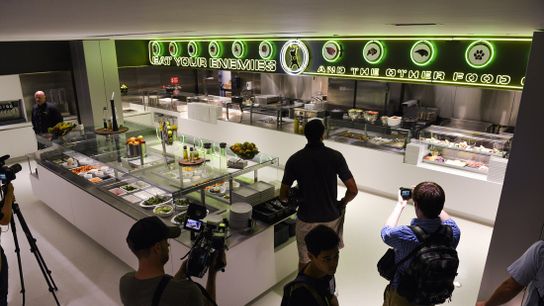Everyone knew once the NCAA lifted their limits on meals and snacks for Division I athletes, the flood gates would open at certain universities, while other programs would have to dig into the books to find the money in order to compete with other schools, and that's exactly what's happening.
According to a piece in the New York Times, a survey released by the Collegiate and Professional Sports Dietitians Association found that average spending at about 24 programs (all within the Power 5 conferences) increased a whopping 145% since August of 2014. Schools that were once spending just over $500,000 for food and snacks for their athletes now spend about $1.3 million, all in the course of a calendar year.
Under the previous rules, programs could supply athletes with bananas and recovery shakes, and now, programs like Ohio State, have multiple "fuel zones" stocked with freshly made sandwiches, fruit, chips, yogurt, and hummus.
It's also important to note that the money that's being talked about is going to far more than just the actual food and drinks being supplied. In Columbus, they have a sports dietitian with four registered dietitians working under her, along with a handful of interns and the same can be said for most Power 5 conference programs.
On top of the personnel and food it's taking to get programs up to speed, many universities are also updating, or building, state of the art kitchens and hiring chefs to work hand in hand with those dietitians in order to prepare the best meals possible for the players to ensure they're fueling their body with the right foods. For example, Auburn broke ground in the fall of 2013 on a $6.6 million wellness kitchen right across the street from a residence hall.
In short, the New York Times points out that what we've seen Oregon and Texas A&M do with their new facilities is now being done to kitchens and food staffs around the country as part of the latest arms race in college football, so brace yourselves.
